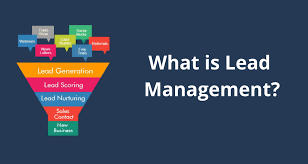Lead Management

What is Lead Management?
Lead management is the process of capturing, tracking, and nurturing potential customers (leads) throughout the sales funnel. It involves collecting lead information, qualifying leads based on their likelihood to convert, and maintaining communication through targeted marketing efforts. Effective lead management helps businesses streamline their sales processes, improve conversion rates, and enhance customer relationships by ensuring that leads receive the right information at the right time.
Lead Management works through the following steps:
1. Lead Capture: Collect lead information through various channels, such as website forms, social media, email inquiries, or events.
2. Lead Qualification: Evaluate and categorize leads based on their level of interest, needs, and potential to convert into customers. This often involves scoring leads using criteria such as demographics, behavior, and engagement.
3. Lead Assignment: Assign qualified leads to the appropriate sales team members or departments based on factors like expertise or territory.
4. Lead Nurturing: Engage leads through targeted communication and personalized content to build relationships and guide them through the sales funnel. This can include email campaigns, follow-up calls, or tailored content based on their interests.
5. Lead Tracking: Monitor lead interactions and behaviors, using a Customer Relationship Management (CRM) system to keep detailed records of all communications and engagements.
6. Conversion: Work towards closing the sale by addressing any concerns, answering questions, and providing incentives or solutions that meet the lead’s needs.
7. Feedback and Analysis: After conversion, gather feedback from new customers to assess their experience. Analyze the lead management process to identify areas for improvement, enhancing future campaigns and strategies.
Topper LeadGen can enhance your lead management by
1. Assessing Your Processes: Evaluating your current lead management strategy to identify strengths and weaknesses.
2. Implementing a CRM: Setting up a suitable Customer Relationship Management system to streamline lead tracking and automation.
3. Refining Qualification Criteria: Developing lead scoring systems to prioritize high-potential leads.
4. Creating Nurturing Strategies: Designing targeted nurturing campaigns for different sales funnel stages.
5. Providing Training: Offering training on best practices for effective lead management and CRM usage.
6. Monitoring Performance: Setting up metrics to track conversion rates and customer feedback for continuous improvement.
7. Optimizing Lead Capture: Enhancing lead capture forms and landing pages for better conversions.
8. Establishing Feedback Loops: Creating mechanisms to refine processes based on insights from leads and outcomes.
Let Topper LeadGen help you improve your lead management effectiveness and drive better results!
